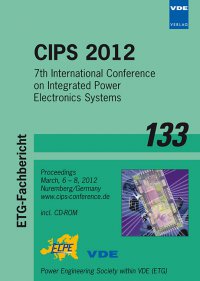Reliability Comparison of a Dual Boost and a Triangular Current Mode Resonant-Transition PFC Converter Topology
Conference: CIPS 2012 - 7th International Conference on Integrated Power Electronics Systems
03/06/2012 - 03/08/2012 at Nuremberg, Germany
Proceedings: CIPS 2012
Pages: 5Language: englishTyp: PDF
Personal VDE Members are entitled to a 10% discount on this title
Authors:
Allemann, S.; Biela, J. (Laboratory for High Power Electronic Systems, ETH, Physikstrasse 3, 8092 Zurich, Switzerland)
Held, M. (Laboratory for Electronics / Metrology / Reliability, EMPA, Ueberlandstrasse 129, 8600 Duebendorf, Switzerland)
Abstract:
In PFC rectifier systems for telecom applications, a general trend towards higher efficiency and also higher power density converter designs can be observed. Due to the passive components and the switching losses, a compromise between power density and efficiency has to be made. A possibility to overcome this limitation are soft-switched converter systems, which, however, often come along with a higher component count, a higher component stress and/or a more complex control. These issues might impair the system reliability although the lower losses might reduce the thermal stress of the components. Therefore, in this work the reliability of a relatively simple, hard switched dual boost PFC rectifier and a soft switched triangular current mode PFC is evaluated and the components influencing the reliability most are identified. The evaluation is based on the prediction models given in IEC TR 62380.


